
The Sony Ericsson K750, introduced in June 2005, is a high-end mobile phone, the successor to the now discontinued K700, and which was succeeded by the K800i in Q2 2006.

The W800 Walkman, released in 2005, was the first Sony Ericsson phone to use the Walkman brand. The phone features Bluetooth v1.2, Infrared and USB connectivity.

The Sony Ericsson W900i is a 3G mobile phone manufactured by Sony Ericsson. The display of the device is a 240×320 pixel 262,000 color 2.1-inch TFT QVGA screen. It has a swivel form factor, which makes the W900 larger than many other phones when folded open. In addition to the 470 MB of internal flash memory, it also supports the Memory Stick PRO Duo as external memory. It has class 10, 32–48 kbit/s GPRS. The W900 can achieve data transfer rates of 384 kbit/s due to its 3G technology. It also includes Bluetooth, a 2-megapixel digital camera with auto-focus and the ability to take QVGA video at 30 frame/s supplemented by a second VGA camera used for video calling and self-portraits and most advertised of all, its ability to play MP3 audio files in Walkman mode for up to 30 hours and its ability to play long length MPEG-4 videos. When using the W900i as a phone, the standby time is up to 379 hours and talktime of up to 8 hours and 40 minutes. Its dimensions are 109 mm × 24 mm × 49 mm and its weight is 148 g (5.2 oz). It also has an internal NVIDIA GoForce 4800 graphics processor and was bundled with the HPM-80 headset.
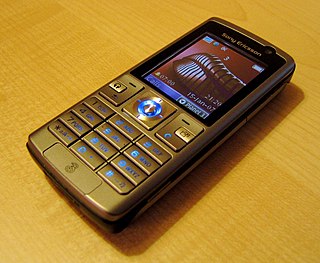
The Sony Ericsson K610i is a 3G phone that Sony Ericsson announced at the 3GSM World Congress on February 13, 2006. It was promoted as the smallest and lightest 3G phone available. It has been succeeded by the K530.

The Sony Ericsson K800i, and its variant, the Sony Ericsson K790, are mobile phone handsets manufactured by Sony Ericsson. Launched in July 2006, the phones are the successor to the Sony Ericsson K750i, and are the first to be tagged with the Cyber-shot branding. Both of the phones feature a 3.2-megapixel digital camera complete with a xenon flash, a protective lens cover, and a new "BestPic" bracketing feature. The new "BestPic" feature takes 9 full quality snapshots of a subject in quick succession, allowing the user to choose the best shots from them. On the entertainment front, the phones have a media player supporting MP3, AAC/AAC+/eAAC+ and WMA music files and 3GP/MPEG-4 video files. The phones also feature a RDS FM radio, and a Memory Stick Micro (M2) slot for expandable solid state memory. The K790/K800 models are also the first Sony Ericsson mobile phones to use ATI's Imageon 2192 graphics engine, which delivers a full 3D gaming graphics for Java and full support for its 3.2-megapixel camera. It is the phone used by James Bond in the 2006 Casino Royale film and trailers.

W710 is a mobile phone produced by Sony Ericsson.

The W810 is a camera phone produced by Sony Ericsson. It was released in January 2006. It is the successor of the W800.
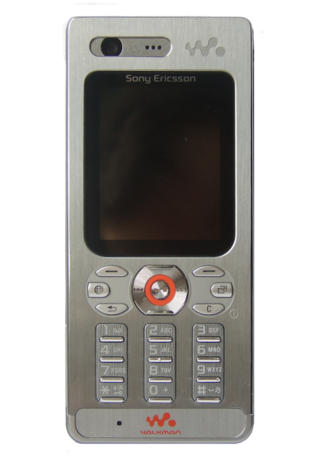
The Sony Ericsson W880i is a mobile phone that was announced on 6 February 2007 and released in spring 2007. Part of Sony Ericsson's Walkman series, the phone has been popular due to its tiny dimensions and low weight. At only 9.4 mm thick, the W880 was one of the few phones on the market that were thinner than 1 cm (10 mm), the other notable example being the Nokia 5310 XpressMusic from later that year.

The Sony Ericsson W610i phone is based on the Sony Ericsson K550 and Sony Ericsson K610i. It is a quad-band GSM phone, but it does not offer 3G. The W610i has colour options similar to the Sony Ericsson W880i. This phone uses the TrackID and version 2.0 of the Walkman player.

The Sony Ericsson K810i is a dual-mode UMTS phone with a 3.2 Megapixel camera with autofocus and 16x digital zoom. It has the full range of mobile entertainment and business features including video telephony, Memory Stick Micro removable storage, picture blogging, full HTML browser, RSS feed support, and music and video players. It is a later iteration of the Sony Ericsson K800i, and both phones have since been succeeded by the Sony Ericsson K850i.

The Sony Ericsson W200 Walkman is a cellphone measuring 101 × 44 × 18mm and weighs 85g (3 oz). It features a VGA camera, an FM radio, and Sony's Walkman software, although it lacks Bluetooth.
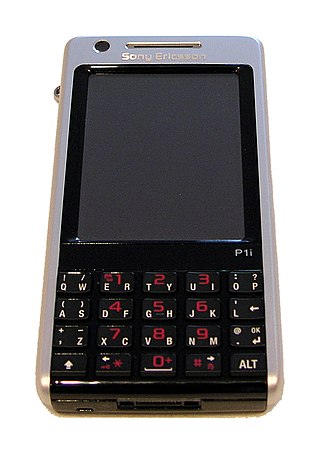
The Sony Ericsson P1 is a mobile phone and the successor of the P990. It was the last of the Sony Ericsson "P" Smartphone series, introduced in 2002 with the Sony Ericsson P800 and it integrates many of the hardware features of its predecessor the P990 in the form factor of the M600. It was announced on 8 May 2007. There is a Chinese version of P1 called P1c. Compare with P1/ P1i, P1c lacks of 3G, thereby using EDGE which is much slower but more available especially in the US and parts of Europe.

The Sony Ericsson K550 is a mid range mobile phone. Announced on February 6, 2007, it was the successor of the K510 model sensor with two-LED photolight and an active lens cover for the camera lens protection and easy camera activation when taking pictures from the phone. The phone has a variant in the form of K550im which was the first i-mode enabled phone bearing the Cyber-shot logo trying to build into the success of the Sony Ericsson K610im model. The phone was one of the first Sony Ericsson models in which the user can find the Fast-Port system connector at the left side instead on the typical bottom part.
The Sony Ericsson W580i is a mid range slider style mobile phone in the Walkman series. The phone was announced on 26 March 2007 and was released in early August. It is a 2.5G Quad-band (850/900/1800/1900) GSM phone with EDGE capabilities and has a 2 megapixel camera. It comes in "Style White", "Boulevard Black", "Metro Pink", "Urban Grey", "Jungle Green" and "Velvet Red".
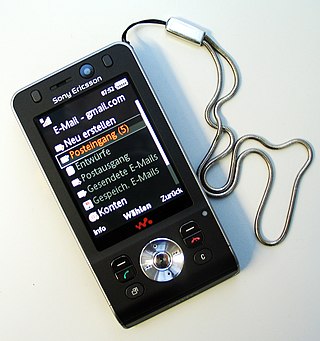
The Sony Ericsson W910i is a slider model music phone. The W910i was announced on June 14, 2007, as a branded "Walkman phone" and uses version 3 of the 'Walkman Player'. The phone also features the shake control feature found on the W580 that enables music track switching by shaking the phone and also for Java ME based video games and applications using the JP-8.
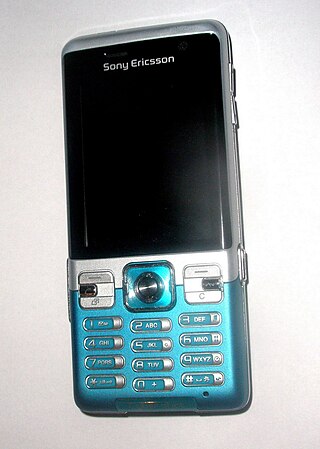
Sony Ericsson C702 is a mobile phone handset manufactured by Sony Ericsson. The phone features a 3.2-megapixel digital camera with LED flash and a few features such as geo-tagging and face detection. On the entertainment front, the phone has a media player supporting MP3, AAC/AAC+/eAAC+ and WMA music files and 3GP/MPEG-4 video files. The phone also features a RDS FM radio, and a Memory Stick Micro (M2) slot for expandable solid state memory

Sony Ericsson W205 is an entry-level dual-band GSM/GPRS Walkman phone with a focus on music playback. It was announced on 7 April 2009 under the marketing tag 'your first Walkman phone'. The phone was available in black, white, pink and blue.

The Sony Ericsson W995 is a candybar slider model music phone designed by Sony Ericsson as the new Walkman flagship phone, previously known as codename "Hikaru". The W995 was introduced February 2009 and released on 4 June 2009 and uses the 4th version of the 'Walkman Player'. It is also the first Walkman phone to feature a standard 3.5 mm headset jack rather than requiring a FastPort connection. It features an 8.1-megapixel camera which seems similar to the C905. Although its camera is comparable to other cameraphones, the video quality is only QVGA (320×240) at its maximum, unlike the majority of cameraphones at the time that had VGA and HD videos.

















